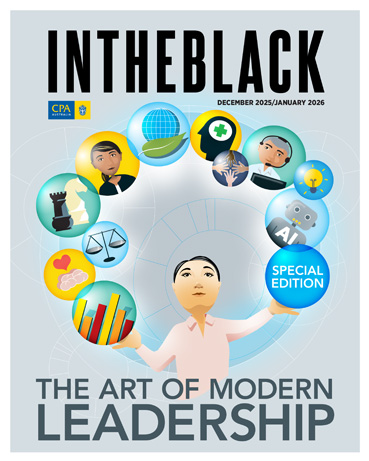Loading component...
At a glance
By Beth Wallace
By 2030, all baby boomers will be aged 65 or older. Many are thinking about retirement — with Generation X hot on their heels and some will be contemplating their work legacy.
Younger workers may also consider the legacy they will leave on an organisation when they move to their next job or eventually retire.
Legacy carries different connotations for different people, says life and leadership coach Luke Fenwick.
“It’s the fingerprints we leave, whether on the world or the place where we happen to be practising our craft,” he says.
It does not have to be a grand achievement, such as boosting profits or overhauling processes, he adds. “It can be the impact we have on clients or the people we work with. It might be that we’ve taught them particular skills or changed their view of themselves — impacting their life and their careers.”
A lasting impression
According to Prina Shah, workplace transformation consultant and author of Make work meaningful: How to create a culture that leaves a legacy, legacy-building is about much more than simply “leaving your mark”.
“It’s not about ego,” she says. “It’s about the contribution you make to enable others to thrive and succeed.”
Shah has listened to a broad range of legacy aspirations. She says some people seek to cultivate psychologically safe workplaces, while others mentor future leaders to ensure the next generation is more capable and diverse.
“Some want to redefine what leadership looks like in their industry,” she adds. “Others focus on creating a sustainable organisational culture that supports wellbeing and inclusion.”
Here are four steps to building a legacy that lasts.
1. Reflect on impact
The first step towards establishing a workplace legacy requires people to reflect on the impact they want to have.
“Ask yourself, ’What will people say about my contribution when I’m gone?’” advises Shah.
One way to articulate this is by undertaking a "tombstone coaching" exercise, which Fenwick uses with clients, where they imagine they are in the last days of their life.
“On that last day, are you going to look back on your life and feel a level of fulfillment?” he asks. “Were you true to your word? Did you live by your values and achieve what you said you would? Was that the thing you really wanted to do?”
2. Identify habits and behaviours
Fenwick then asks clients to use these insights to identify what they could do better in their current life, as well as the habits or behaviours they would need to implement to bring their legacy to fruition.
This might mean becoming the person that is always present and gives people their undivided attention during meetings, for example, or acknowledges a team member’s achievements every week.
It could mean finding opportunities to share wisdom. “If you’re wanting to impact a wide group of people, you might suggest doing informative lunch-and-learn-type sessions,” says Fenwick. “You might want to support new recruits coming into the organisation within their first six or 12 months, or emerging leaders might be your focus.”
Networking events and social media platforms can also provide forums for wisdom-sharing, which Shah believes is one of the most generous ways to build a legacy. She sees mentoring as a great way to guide others, “not by giving them the answers, but by helping them find their own”.
Similarly, being a trusted sounding board can leave a powerful legacy. “Make yourself available as a reliable confidant for others,” suggests Shah. “Provide honest and constructive feedback.”
Why you need a documented succession plan
3. Define what success looks like
As with any goal, when planning a legacy, Fenwick recommends defining what success looks like.
“Once you’re clear about your destination, identify potential roadblocks and the people who need to be part of the journey.”
Setting a basic timeline can also be helpful. “For example, if you have five years left in your career, what are the key things you want to impact along the way?” asks Fenwick. “In essence, you’re creating a checklist of the things you want to achieve.”
In addition, he encourages people to reflect on their chosen legacy and why it is important. “There will always be times when it feels too hard or you don’t have the time,” he says. “But if you’re connected to your ’why’ that’s your internal motivator and the fuel that’s going to push you forward.”
4. Get started building a legacy
The best time to think about legacy is always now. “It’s not something to leave until you’re about to retire or move on,” Shah says.
She recommends starting with small, consistent actions: aligning behaviour with values, prioritising relationships, celebrating wins and failures, and challenging the status quo.
“Remember, your legacy isn’t built in a single action or initiative,” says Shah.
“It’s the sum of consistent, intentional behaviours over time. Every decision, conversation and interaction contribute to what you’ll ultimately leave behind.”

